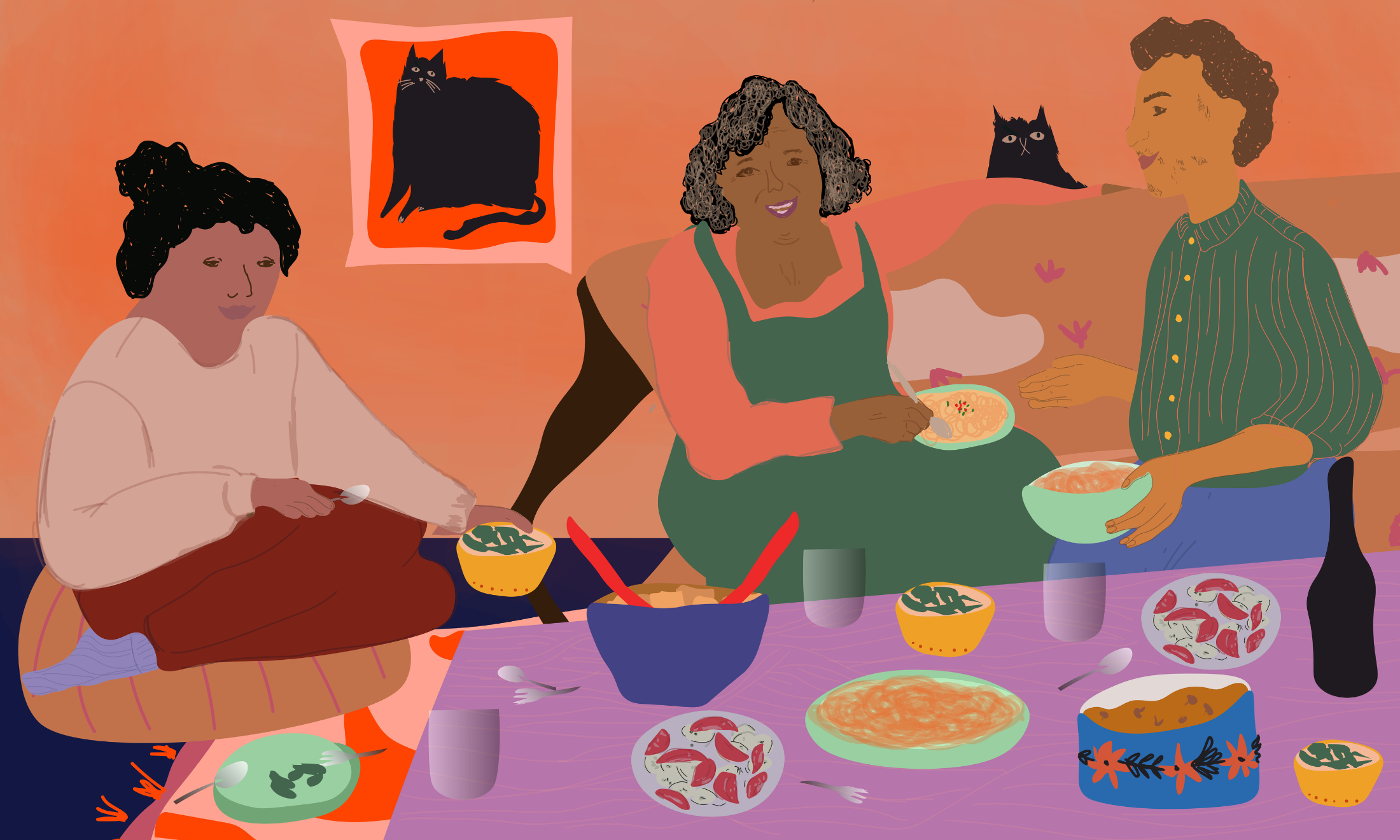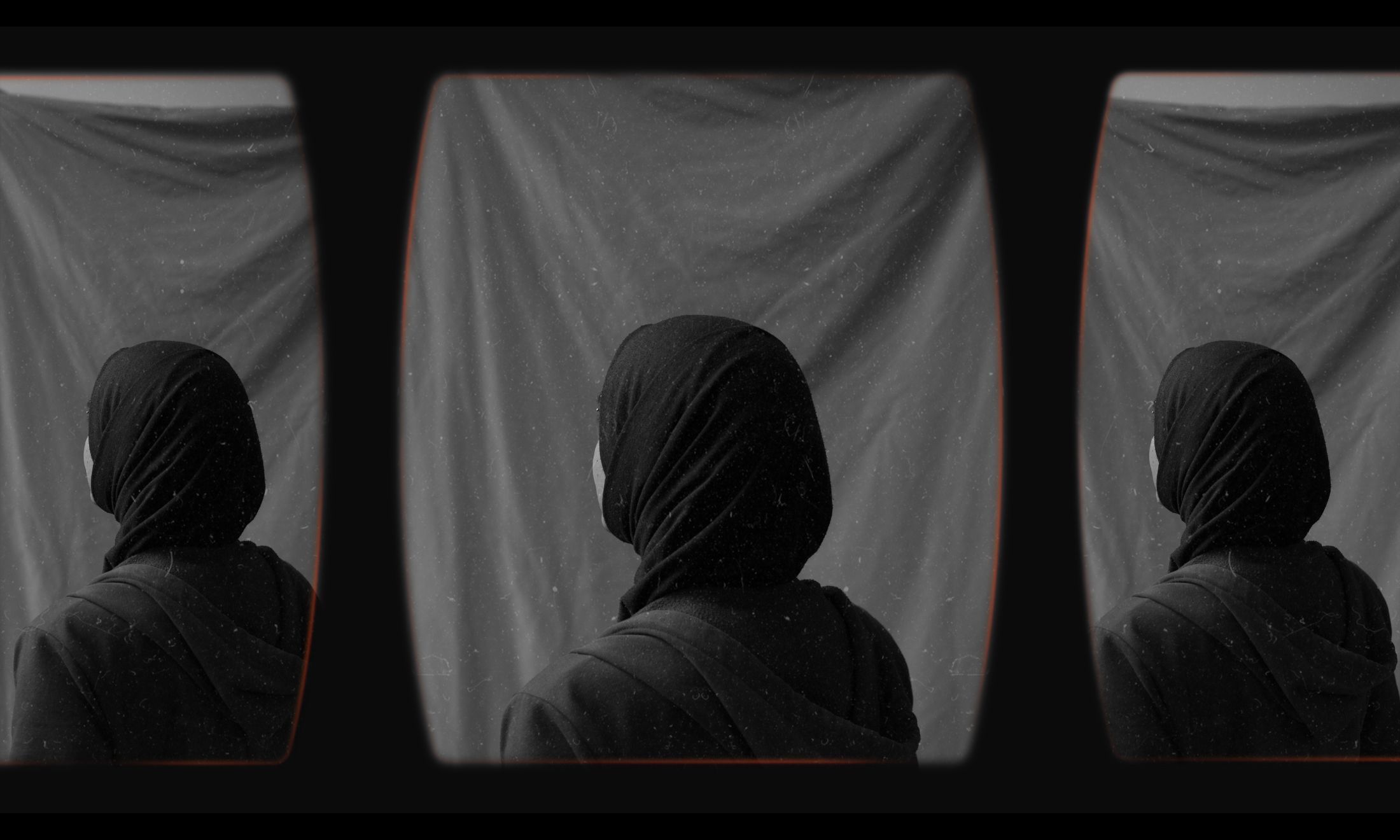
photo via Neydstock / Canva
Wearing a niqab and identifying with queerness is not a paradox
Hasfa Lodi dispels myths around Islam and LGBTQI+ community by speaking to Muslim women about queerness and multilayered identities.
Hafsa Lodi
09 Dec 2020
Trigger Warning: mentions of sexual assault
When you hear “niqab” and “queer” in the same sentence, you might assume the discussion is about traditional Muslims denying the plausibility of queerness in Islam. Or, the widely circulated image of a niqabi woman who was arrested during a Pride march in London in 2019, for shouting “shame on you,” might come to mind.
Images of Muslim women clad in niqab, and Pride demonstrators cloaked in rainbow flags, may seem to offer a stark contrast of ideologies – one, of a stereotypically strict and conservative culture, and the other, of freedom and fluidity. But simplistic assumptions are shrouded in ignorance, and conversations about religion and identity are complex and multi-layered.
American niqabi Rivka Sajida for instance, was Jewish before reverting (a phrase many Muslims prefer to “converting”) to Islam. Her Instagram feed is an amalgamation of Islamic Hadith (sayings of the Prophet Muhammad), face-veil selfies and Queer Muslim SIMS characters. In one image, she wears a black T-shirt emblazoned with the words “True to you” above a rainbow-coloured bar, layered over a black long-sleeved shirt and finished with a rainbow-hued Pashmina headscarf. A single wardrobe evidently, can house both Pride T-shirts and niqabs, just as one can identify as both a niqabi Muslim, and queer, as is the case with Rivka.
“In feminism we talk about intersectionality – it’s absolutely possible for spheres of minority to exist in overlapping forms. One can decide to wear niqab – be it for health, comfort, necessity, or religion – while also being LGBT+. We can’t change how Allah made us. He made us both, and He is all-wise, all-aware,” she says.
Rivka has a degree in religion and has also extensively studied theology, and her interpretation of the Quran does not forbid queerness. “The word ‘homosexuality’ was never included in an English translation of the Torah or Bible, and thus also the Quran, until the 20th Century,” she says. She believes that the eventual translation was perhaps politically influenced, and that the story of Prophet Lot (or Lut in Arabic), which is found both in the Torah, Bible and Quran, tells of a city where men inhabitants were known to rape young boys and men.
“Basically, it’s about rape, not about being sexually attracted to the same sex,” she explains. Rivka adds that mukhannathun, or “effeminate” men, which included gay men and trans women during the time of the Prophet, were visible, acknowledged, and remained unpunished. “The people during the time of the Prophet were more tolerant, and it wasn’t until the West introduced the idea that homosexuality was ‘bad’ that Arabs took on this stance,” believes Rivka.
Today, most orthodox Muslims view queerness to be incompatible with Islamic teachings, with many claiming you cannot be a queer Muslim, or even ally of queerness. Those who are visibly Muslim – namely, women who wear hijabs or niqabs, are often expected by both fellow Muslims, and non-Muslims, to hold these more conservative views.
“Being a queer, openly Bi woman doesn’t negate the fact that I’m Muslim; Islam is an inherent part of who I am”
Hafsa Qureshi
“When you tell someone you’re a queer Muslim, they assume you’re not religious in any way shape or form and when they see me, wearing the hijab, it kind of shocks them. They’re not expecting someone who’s visibly religious,” says Birmingham-based Hafsa Qureshi, who works at Stonewall, the UK’s largest LGBTQI+ rights charity.
Though she has experimented with it in the past, Hafsa doesn’t wear the niqab full time, but she has been wearing a headscarf since the age of 11 – which is also when she first came out to her sister. “It’s as if being openly LGBQT, I’m lesser-than, or not full Muslim. Being a queer, openly Bi woman doesn’t negate the fact that I’m Muslim; Islam is an inherent part of who I am,” she says.
“People equate modesty with virginity, and I find that to be a false equivalence and distasteful. Being queer-identifying seems to imply a lack of modesty, and a very sexual way of being, and I don’t really agree with that, it’s just a part of me, just like the colour of my eyes are.”
A focus on dress may be reductive, but wearing a headscarf and not conforming to stereotypical images of what “queerness” may look like, nonetheless gives Hafsa a semblance of religiosity that can’t easily be overlooked. “I think being visibly Muslim and openly queer stops people from being able to discount me and say, ‘she’s not religious.’ Some people are so keen on the visuals of things, that’s all they get hung up on,” she explains.
Regardless of religion, people are quick to pigeonhole others according to their appearances – especially when they’re fully covered in head-to-toe, seemingly “religious” attire. “Wearing niqab and being visibly Muslim comes with a lot of judgements from Muslims and non-Muslims alike. Muslims assume that I am extreme, while non-Muslim thinks that I am oppressed,” says Karachi-based Shehzeen Muzaffar, a niqabi and avid book blogger.
“Wearing niqab has taught me patience, kindness and tolerance towards other minority groups”
Shehzeen Muzaffar
Though not queer-identifying herself, Shehzeen believes that her wearing of the niqab helps elevate her sense of empathy and attitudes towards others who are prone to prejudice. “Wearing niqab has taught me patience, kindness and tolerance towards other minority groups and this comes from within, especially when you are also a part of a minority group. In my case, it’s being brown, Muslim and a niqabi,” says Shehzeen. “I don’t want a world where I am scared to step out of my house just because of a cloth on my head and similarly, I don’t want a world where queer people are scared to step out of the house because of who they are.”
This show of support shouldn’t come as a shock, believes Professor Reina Lewis at London College of Fashion, UAL, who has extensively studied and written about both modest fashion and the role of dress in the formulation of sexed and gendered identity. “I don’t find it all surprising that some niqabi women have progressive politics on gender and sexuality. Niqab wearing women will show the same breadth of opinion and politics as the rest of the hugely diverse Muslim community, as with any religious community or social group,” she explains.
“People who follow orthodox or conservative interpretations of a religious tradition are not necessarily politically conservative, and we have seen women and men from conservative religious communities – Muslim and otherwise – reaching out publicly to support different communities, whether cross-faith, or in relation to gender and sexuality, or wider issues of social justice and anti-racism.”
Muslims are by no means a monolith, and while many may consider queerness sinful, the past two decades have seen a rise in women activists for queerness within Muslim communities. Irshad Manji, author of Allah, Liberty and Love often sparks controversy for her unorthodox interpretations of faith. Pakistani-Canadian Samra Habib’s memoir, We Have Always Been Here, was published last year, and explores the complexities of identity and acceptance from a queer Muslim perspective. Blair Imani who is Black and bisexual, and a hijabi convert to Islam, chose the name “Imani” because of its Arabic translation – “faith”.
A 2018 exhibition in San Francisco titled “The Third Muslim: Queer and Trans Muslim Narratives of Resistance and Resilience” featured a pink burqa decorated with a neon green tropical-patterned panel and lace veil over the eyes. Titled “Alpha Delta Burqa”, it was created by queer Muslim artist and activist Saba Taj, who tackles themes like sexism and Islamophobia in her work. “Identity does not operate on binaries — it is fluid and hybrid,” stated Saba to Huffington Post.
Not only are religious experiences diverse and complex, but garments like the niqab are not always worn for purely pious reasons. Sometimes they are simply favoured for the anonymity they provide – in parts of South Asia they are even worn by sex workers seeking potential clients on the streets. In Churails, a Pakistani web series that went viral this past summer, colourful niqabs are the uniform of choice for a band of women detectives – two of whom share a romantic relationship.
“People who follow orthodox or conservative interpretations of a religious tradition are not necessarily politically conservative”
Only in diverse and empowered portrayals of the niqab, will stereotypes around their supposedly ultra-conservative, repressive nature, continue to shatter. As Muslims continue to shake off the shadow of post-9/11 Islamophobia, the truly multifarious nature of the community comes further to light, inclusive of veiled, Muslim women who are queer-identifying or promote queer allyship. And, when visibly-Muslims speak up for the compatibility of faith and queerness, they may be able to help inspire more widespread tolerance within their communities.
Hafsa, who has won three awards for her activist work, says that very few queer Muslims have the support of their families and peers. “It’s a huge privilege that I can be completely out, and I want to use that privilege as much as I can so other queer Muslims can see themselves represented, because there are loads of ‘queerjabis’ of out there,” she says. “But there’s that fear of violence, of retaliation – I get death threats all the time.” Hafsa sees her mission to improve the visibility of queer people of faith, as somewhat of a religious responsibility: “I’m just a small blip, compared to the organisations out there like Hidayah LGBT, but together we can support our community, and to me that’s part of my identity and journey as a Muslim – to serve my community.”
Rivka, meanwhile, is working on furthering Daar ul-Gharib, the virtual masjid she started for women and non-binary people. “Many of our members are queer, and many are also disabled. We aren’t perfect, but we are a support system for each other, and I think that’s what is needed most right now. Without good support, we won’t have the stability to go out into the world to affect change.”
Initiatives and individuals striving to de-stigmatise queerness in Islam will continue to face resistance from more traditional members of Muslim communities. But, veiled women, particularly those who fall at the ultra-conservative end of the modest dress spectrum and wear niqabs, certainly paint an unexpected picture of what activists for this cause may look like, and ironically, it may be in these women’s perceived “pious” dress, that fellow Muslims will find themselves having second thoughts about the compatibility of queerness and faith.







